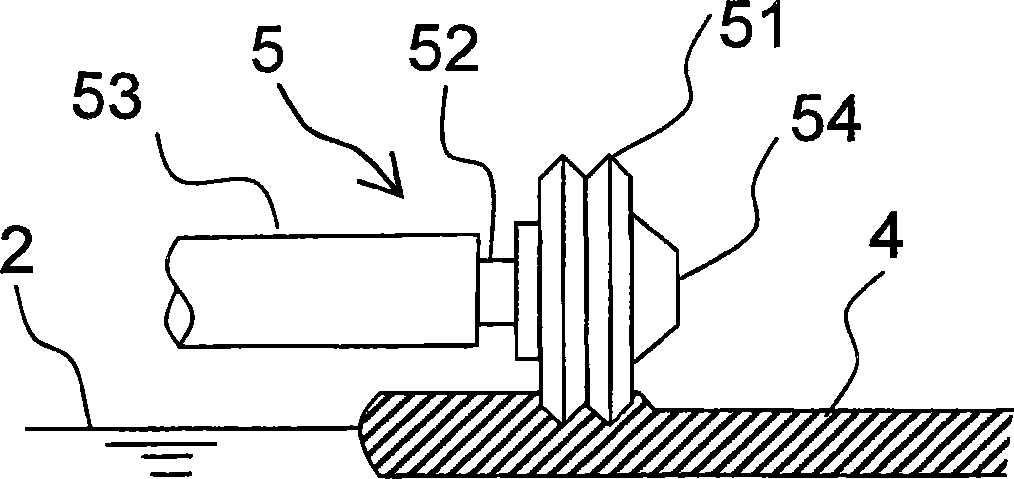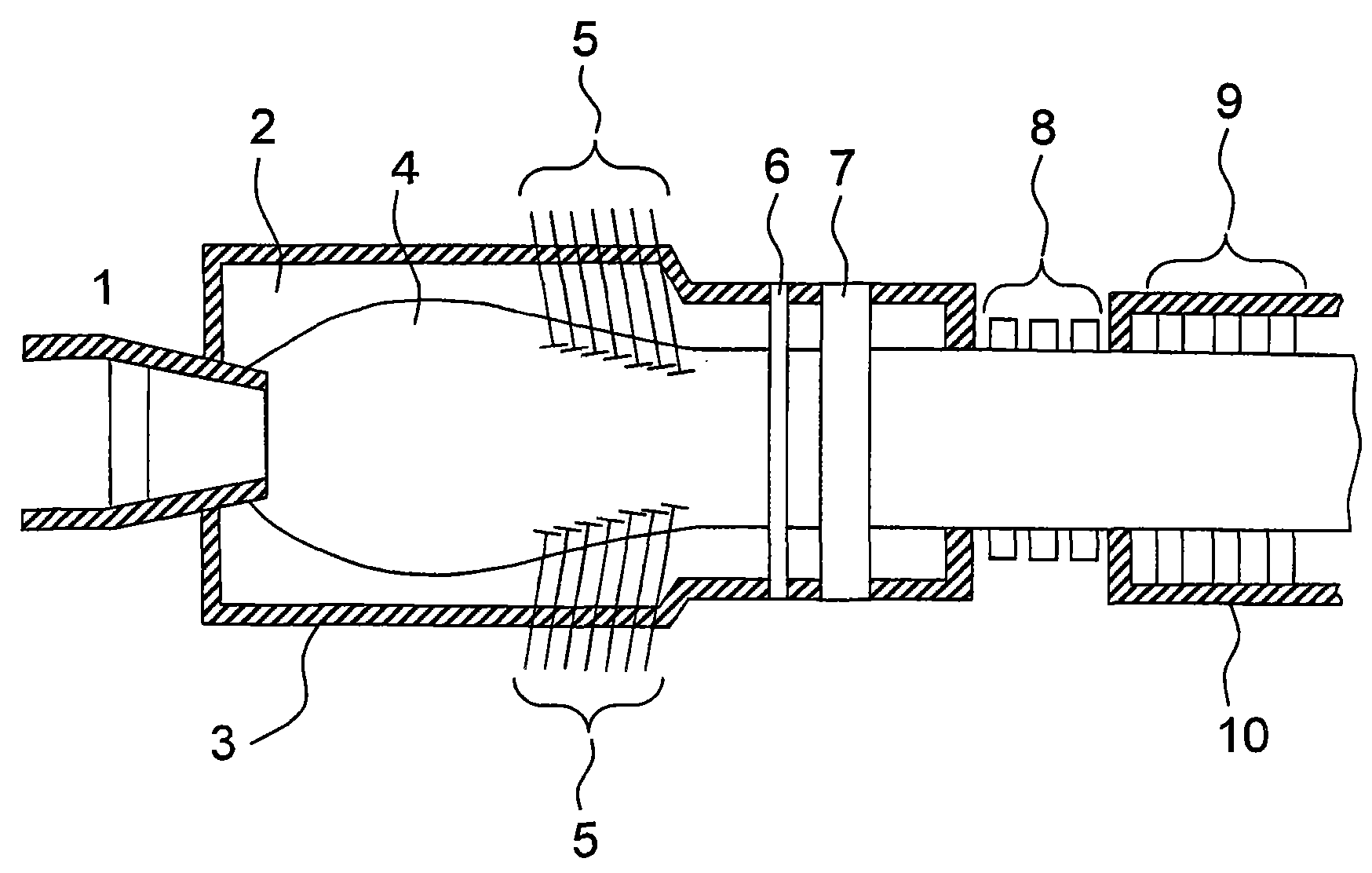Method for making glass plate by floating method
A manufacturing method and glass plate technology, which are applied in the field of upper rolls of glass ribbons, can solve the problems of difficult upper roll processing, glass belt tooth defects, and carbon upper rolls that cannot apply sufficient pressing force and tension, so as to improve adhesion, Reduce deformation, reduce the effect of fluctuation
- Summary
- Abstract
- Description
- Claims
- Application Information
AI Technical Summary
Problems solved by technology
Method used
Image
Examples
Embodiment 1
[0047] In order to confirm the non-adhesion between diamond-like carbon and tin, SUS304 (JIS G4304 [2005 edition]: hot-rolled stainless steel sheet and strip) was cut into 10 mm squares, and CrN was ion-plated to form a thickness of about 3 μm. Furthermore, a thin film of diamond-like carbon was formed thereon to a thickness of about 1 μm by a CVD method.
[0048] The prepared sample is placed in a vertical transparent quartz tube, and the spherical tin of about 1mmΦ after the reduction treatment at 1200°C in the hydrogen flow is placed in the center of the sample, while flowing through the quartz tube. Purity nitrogen is heated to 800°C with an infrared heating furnace. The oxygen concentration at the outlet of the quartz tube during heating was 1 ppm or less. Photographs were taken of the state of the sample and solder balls after 8 minutes at 800°C. The contact angle was about 164° on the diamond-like carbon thin film, and about 36° on the uncoated SUS304. In addition, t...
Embodiment 2
[0050] In actual production, in order to confirm the non-adhesion with tin, no peeling of the film, no tooth defects, and durability in the molten tin bath, through S25C (JIS G4051 [2005 edition]: carbon steel for mechanical structure The roller part of the upper roller made of steel material) was formed into a CrN film with a thickness of about 3 μm by the ion plating method in the same manner as in Example 1. Then, the roller portion was placed in a CVD chamber and cleaned to form a diamond-like carbon thin film of 1 μm. The roller part after film formation was joined to the rotating shaft made of stainless steel by welding. A pair of pipes are provided inside the rotating shaft, and cooling can be performed by passing water through the pipes. In addition, the surface of the rotating shaft of the upper roll is covered with a protective material made of ceramic material, and the head of the roller part is covered with a stainless steel protective material, and installed at b...
PUM
| Property | Measurement | Unit |
|---|---|---|
| thickness | aaaaa | aaaaa |
| thickness | aaaaa | aaaaa |
Abstract
Description
Claims
Application Information
 Login to view more
Login to view more - R&D Engineer
- R&D Manager
- IP Professional
- Industry Leading Data Capabilities
- Powerful AI technology
- Patent DNA Extraction
Browse by: Latest US Patents, China's latest patents, Technical Efficacy Thesaurus, Application Domain, Technology Topic.
© 2024 PatSnap. All rights reserved.Legal|Privacy policy|Modern Slavery Act Transparency Statement|Sitemap



